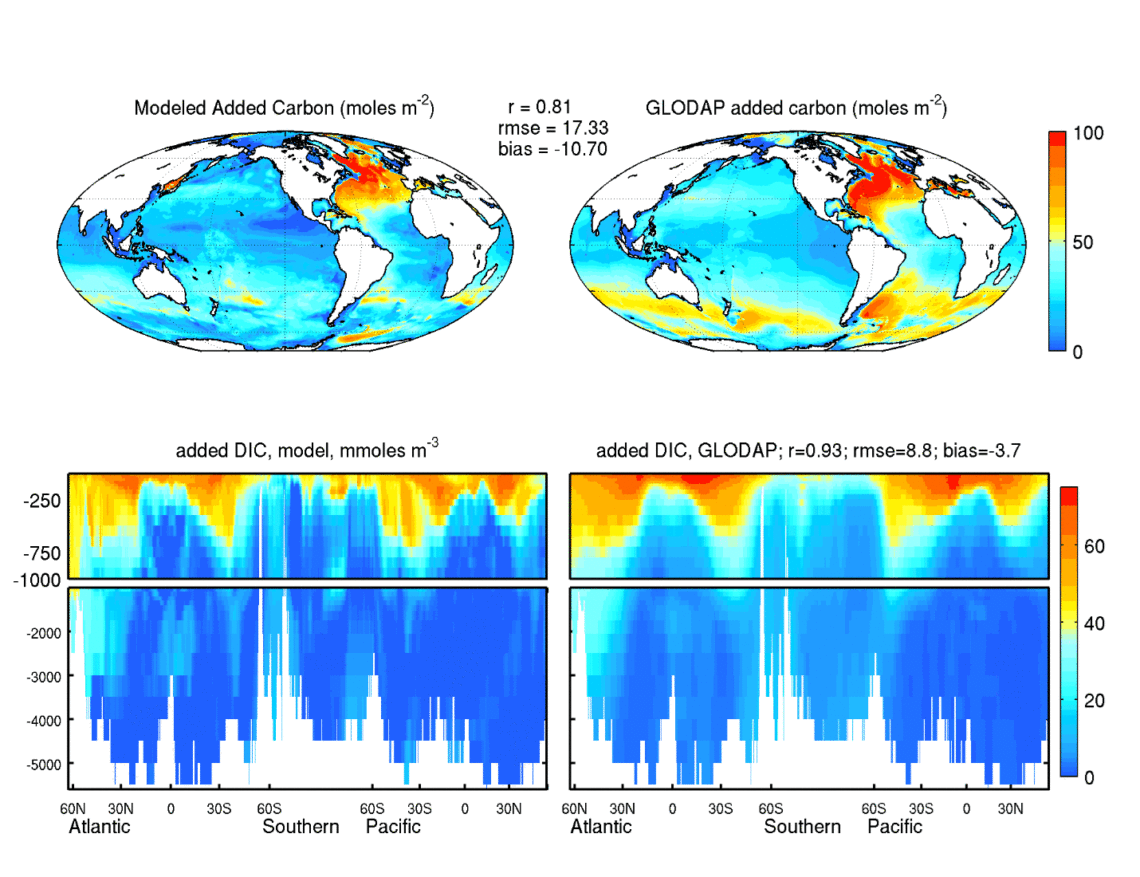Ocean Biogeochemistry in GFDL’s Earth System Model 4.1 and its Response to Increasing Atmospheric CO2
Key Findings
- Improved representation of plankton food webs, organic matter remineralization, and linkages between the land, ocean and atmosphere yielded skillful global ocean carbon cycle and ecosystem simulations in GFDL’s new global Earth System Model (ESM4).
- Representations of ocean productivity have improved relative to previous ESMs, but phosphate limitation and hypoxia are overestimated in some areas.
- High CO2 and associated warming substantially reduces the biological pump and ocean productivity across trophic levels.
Charles A. Stock, John P. Dunne, Songmiao Fan, Paul Ginoux, Jasmin John, John P. Krasting, Charlotte Laufkötter, Fabien Paulot, Niki Zadeh. Journal of Advances in Modeling Earth Systems. DOI: 10.1029/2019MS002043
The Geophysical Fluid Dynamics Laboratory’s newest Earth System Model, ESM4.1, was developed to study the past, present, and future evolution of the Earth system under scenarios for natural and anthropogenic drivers of earth system change, including greenhouse gases and aerosols. The response of the ocean’s vast carbon and heat reservoirs to accumulating greenhouse gases greatly reduces their atmospheric and terrestrial impacts, but also puts ocean environments and the marine resources they support at risk. This paper describes, evaluates, and discusses the ocean biogeochemical component of ESM4.1.
Compared to the previous generation of GFDL’s Earth systems models, ESM4.1 offers enhanced resolution of plankton food web dynamics, allowing for improved resolution of climate change effects on fisheries. The authors also document a refined representation of the remineralization of sinking particles, which is important to the ocean’s capacity to store anthropogenic CO2 emissions. In addition, they demonstrate that the inclusion of additional dynamic exchanges of nutrients between Earth system components enables more holistic analyses of ocean responses to anthropogenic change.
Simulations had small drifts and robustly captured large-scale observed nutrient distributions, plankton dynamics, and characteristics of the biological pump. The representation of ocean productivity in ESM4.1 has improved relative to past GFDL ESM’s, and this contributes to realistic surface and deep ecosystem and carbon system properties. These qualities led to an uptake of 136 Pg C since 1850, consistent with observation-based estimates (see Figure). ESM4.1 does, however, over-express phosphate limitation and open ocean hypoxia in some areas.
The model’s response to a 200% atmospheric CO2 increase from pre-industrial conditions over 70 years included: a) a weakened, shoaling organic carbon pump leading to a 38% reduction in the sinking flux at 2000m; b) a two-thirds reduction in the calcium carbonate pump that nonetheless generated only weak calcite compensation on century time-scales; c) significant increases in acidic and hypoxic waters; and d) a significant reduction in global net primary production that was amplified at higher trophic levels, in contrast with previous GFDL-ESMs.
